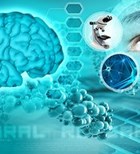Color vision: גורמים אפשריים, מצבים דומים ומאמרים
 הכי חשוב לדעת על Color vision
הכי חשוב לדעת על Color visionראייה: בדיקה אלקטרופיזיולוגית

ראייה: בדיקה אלקטרופיזיולוגית
הראייה שלכם הולכת ונחלשת? במקרים מיוחדים, לא די בבדיקות...
Color vision: תשובות ממומחים וייעוץ אונליין
האם נטילת רואקוטן לטיפול באקנה יכולה להעלות את ערכי הסוכר? בני נוטל את התרופה מנובמבר. תודה.
כן, שינויים ברמת הסוכר תוארו כתופעת לוואי מצ"ב רשימת תופעות הלואי כפי המופיע ברישום רשות התרופות והמזון בארהב Accutane FDA Prescribing Information: Side Effects (Adverse Reactions) SIDE EFFECTS Clinical Trials and Postmarketing Surveillance The adverse reactions listed below reflect the experience from investigational studies of Accutane (isotretinoin) , and the postmarketing experience. The relationship of some of these events to Accutane (isotretinoin) therapy is unknown. Many of the side effects and adverse reactions seen in patients receiving Accutane (isotretinoin) are similar to those described in patients taking very high doses of vitamin A (dryness of the skin and mucous membranes, eg, of the lips, nasal passage, and eyes). Dose Relationship Cheilitis and hypertriglyceridemia are usually dose related. Most adverse reactions reported in clinical trials were reversible when therapy was discontinued; however, some persisted after cessation of therapy (see WARNINGS and ADVERSE REACTIONS). Body as a Whole allergic reactions, including vasculitis, systemic hypersensitivity (see PRECAUTIONS: Hypersensitivity), edema, fatigue, lymphadenopathy, weight loss Cardiovascular palpitation, tachycardia, vascular thrombotic disease, stroke Endocrine/Metabolic hypertriglyceridemia (see WARNINGS: Lipids), alterations in blood sugar levels (see PRECAUTIONS: Laboratory Tests) Gastrointestinal inflammatory bowel disease (see WARNINGS: Inflammatory Bowel Disease), hepatitis (see WARNINGS: Hepatotoxicity), pancreatitis (see WARNINGS: Lipids), bleeding and inflammation of the gums, colitis, esophagitis/esophageal ulceration, ileitis, nausea, other nonspecific gastrointestinal symptoms Hematologic allergic reactions (see PRECAUTIONS: Hypersensitivity), anemia, thrombocytopenia, neutropenia, rare reports of agranulocytosis (see PATIENT INFORMATION). See PRECAUTIONS: Laboratory Tests for other hematological parameters. Musculoskeletal skeletal hyperostosis, calcification of tendons and ligaments, premature epiphyseal closure, decreases in bone mineral density (see WARNINGS: Skeletal), musculoskeletal symptoms (sometimes severe) including back pain, myalgia, and arthralgia (see PATIENT INFORMATION), transient pain in the chest (see PATIENT INFORMATION ), arthritis, tendonitis, other types of bone abnormalities, elevations of CPK/rare reports of rhabdomyolysis (see PRECAUTIONS: Laboratory Tests). Neurological pseudotumor cerebri (see WARNINGS: Pseudotumor Cerebri), dizziness, drowsiness, headache, insomnia, lethargy, malaise, nervousness, paresthesias, seizures, stroke, syncope, weakness Psychiatric suicidal ideation, suicide attempts, suicide, depression, psychosis, aggression, violent behaviors (see WARNINGS: Psychiatric Disorders), emotional instability Of the patients reporting depression, some reported that the depression subsided with discontinuation of therapy and recurred with reinstitution of therapy. Reproductive System abnormal menses Respiratory bronchospasms (with or without a history of asthma), respiratory infection, voice alteration Skin and Appendages acne fulminans, alopecia (which in some cases persists), bruising, cheilitis (dry lips), dry mouth, dry nose, dry skin, epistaxis, eruptive xanthomas,7 erythema multiforme, flushing, fragility of skin, hair abnormalities, hirsutism, hyperpigmentation and hypopigmentation, infections (including disseminated herpes simplex), nail dystrophy, paronychia, peeling of palms and soles, photoallergic/photosensitizing reactions, pruritus, pyogenic granuloma, rash (including facial erythema, seborrhea, and eczema), Stevens-Johnson syndrome, sunburn susceptibility increased, sweating, toxic epidermal necrolysis, urticaria, vasculitis (including Wegener's granulomatosis; see PRECAUTIONS: Hypersensitivity), abnormal wound healing (delayed healing or exuberant granulation tissue with crusting; see PATIENT INFORMATION) Special Senses Hearing - hearing impairment (see WARNINGS: Hearing Impairment), tinnitus. Vision- corneal opacities (see WARNINGS: Corneal Opacities), decreased night vision which may persist (see WARNINGS: Decreased Night Vision), cataracts, color vision disorder, conjunctivitis, dry eyes, eyelid inflammation, keratitis, optic neuritis, photophobia, visual disturbances Urinary System glomerulonephritis (see PRECAUTIONS: Hypersensitivity), nonspecific urogenital findings (see PRECAUTIONS: Laboratory Tests for other urological parameters)
שלום רב יש לי ילד בן שנתיים ושלושה חודשים ילד מאוד מפותח ופיקח מדבר יפה מאוד ובעל קליטה וזכרון מאוד טובים העניין הוא שהוא ממש לא יודע להבחין בין צבעים כבר בערך שנה אנחנו מנסים ללמד אותו ולעקוב אחר העניין אבל הוא לא מסוגל להגיד על משהו באיזה צבע הוא אלא הוא מהמר מכיוון שהוא יודע את שמות כל הצבעים בעל פה שאלתי - באיזה גיל אמור ילד לדעת להבחין בין צבעים ולזהות אותם? ומה לעשות במידה והוא כבר עבר את הגיל הזה? תודה מראש ישראל
לישראל שלום, ילדים מציינים צבעים בשמם בגיל 2-4 שנים בערך, תלוי בעיקר בכישורים המילוליים. יכולת ראיית הצבעים אם היא ישנה, היא ישנה מלידה, או שחסרה מלידה. מכיוון שאין כל טיפול ללקויי ראיית צבעים, אין גם חשיבות מיוחדת לאבחון מוקדם, ואני במקומכם הייתי פשוט "יורד מהעניין" עד שיתברר מאליו. אם אתם בכל זאת סקרנים לדעת, יש לי מבחן ראיית צבעים המבוסס על ציורים במקום על מספרים, כך שניתן לאבחן לקויי ראיית צבעים ברגע שהילד מסוגל לזהות ציורים.
הילד שלי בן שנתיים ועשרה חודשים ורק עכשיו התחיל להגיד את הצבע הנכון של מה שנשאל. גם הוא דיבר שוטף מגיל שנתיים והיה מנחש צבעים, כי ידע בע"פ את השמות. אין מה לדאוג, זה לוקח זמן, גם אני בהתחלה דאגתי ובטיפת חלב אמרו לי שילד אמור לדעת צבעים בגיל שלוש וממש אין מה לדאוג בקשר לזה.
יש משחקים שבהם יש להתאים בין שני צבעים זהים (כמו לוטו) ואז אפשר לראות אם הוא מזהה את הצבעים ורק לא יודע לקרוא בשמם.



